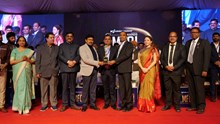
Each year, as 1 July, World Doctors’ Day, is observed across India, the date serves a dual purpose. On one hand, it is a heartfelt tribute to those noble physicians who have devoted their lives to the service of humanity. On the other, it is a moment of uncomfortable introspection: How did those once revered as "Gods on Earth" come to be seen as harbingers of death for the poor?
Medicine or Market? Healing the Disease or Selling the Invoice?
Today, a young doctor’s stethoscope weighs far less than the burden of the loan they carry from medical school. With average medical education costs in India soaring between Rs 50 lakh to Rs 1 crore, the noble profession begins with a mountain of debt. That debt is often offloaded not through public service, but via high-fee consultations in private hospitals. A mere cough now demands an MRI, five blood tests, and a Rs 10,000 prescription.
The patient is no longer a person in pain ,they are now ROI: Return on Investment.
"Sometimes, what we call treatment is merely a more expensive form of suffering."
COVID-19 and the Commercial Anatomy of Indian Healthcare
The pandemic did not just attack lungs , it tore off the mask of humanitarianism worn by our health sector.
-
An injection that cost Rs 100 was sold for Rs 1 lakh.
-
Oxygen cylinders went to the highest bidder.
-
Even cremation became a site of profiteering.
Some doctors did risk their lives and uphold their oath. But the market did not sleep. It cashed in, with hospitals making triple the profits and patients paying six times more during COVID-19.
Today’s doctor is no longer a healer, but often a brand ambassador for pharmaceutical companies, diagnostic machines, and their clinic’s EMI.
From Gods to Sales Agents? A Fall from the Sacred
In Indian mythology, divine healers such as the Ashwini Kumar twins, revered as the first physicians of Ayurveda, were celestial beings who carried the nectar of immortality. Lord Dhanvantari emerged from the churning ocean, holding a pot of divine medicines.
But those were the days when healing was sacred. Today, it is strategic.
-
Every pill prescribed carries a profit margin.
-
Every pathology test has a referral commission.
-
Every patient is a billing unit.
Before Hippocrates or Dhanvantari, There Were Tribal Healers
Let us not forget: the first doctors of India were not from white coats and Western schools , but from the tribal heartlands of Bastar, Jharkhand, Odisha, and Chhattisgarh. The Ganda tribe, among others, is known for its mastery in herbal treatments.
I have personally witnessed these forest vaidyas (traditional healers) treat complex conditions like bone fractures, kidney ailments, skin diseases, diabetes, and even cancer — using forest herbs, with no fee, no prescription pad, and no hidden costs.
Their medicine is born of empathy, not enterprise.
The Dream of Becoming a Doctor, and the Debt That Follows
Visit any government school and ask the children what they want to become. At least one in three will say: “A doctor.”
But this dream is expensive. Entire families mortgage homes, sell land, pledge jewellery — just to put a child through medical school. And when that child emerges as "Doctor Sahib", they are already buried in debt.
The oath to treat the patient as God fades quickly when every patient starts resembling a walking currency note.
"The pharmacy has replaced the physician, and the invoice now speaks louder than the oath."
The Commission Therapy: Pharma Deals and Medical Manipulations
Medical representatives do not visit doctors to discuss new cures. They come to negotiate profit margins.
-
A certain pill earns the doctor Rs 50.
-
A particular injection brings an all-expense-paid trip.
-
A pathology referral may pay more than the consultation fee.
In this setup, the disease is less important than the depth of the patient's pocket.
"The root of illness is no longer the virus, but commerce itself."
The Facts That Stun: A Health System in Coma
-
Average cost of becoming a doctor in India: Rs 80 lakh
-
70–80% doctors receive direct or indirect benefits from pharma companies (seminars, gifts, travel, fellowships, etc.)
-
During COVID-19, private hospital profits tripled; patient expenses rose six-fold
-
According to ICMR, India sees 2 lakh deaths annually due to wrong or unnecessary treatments
-
India spends only 1.28% of GDP on public healthcare (WHO recommends at least 5%)
-
62% of Indian families face financial crises due to health expenses
-
74% of India’s healthcare is controlled by the private sector
-
On average, Indian doctors prescribe 5 branded drugs per patient , 3 of which are avoidable
-
Lancet Global Health Report (2018): 1.6 million Indians die annually due to lack of timely treatment or proper medication
-
WHO 2022: 14% of deaths in India are indirectly due to over-diagnosis or overtreatment
The Path Ahead: A Distant Horizon, But Not Impossible
The problem is systemic. The decay runs deep.
The question is no longer: Did the patient survive?
It is: Did someone profit from their suffering?
When doctors no longer feel the patient’s pulse but instead monitor profit graphs;
When medical reps no longer offer knowledge, but sales targets;
Then healthcare becomes a transaction, not compassion.
“If those who swore to preserve life now stand upon a mountain of profit built on corpses should we still blame Yamraj, the god of death?”
For Yama no longer needs to visit…
In our times, even death can be prescribed.
Yet, Not All Are Lost...
Let us be clear, not all doctors are complicit. Many uphold the highest ethical standards, selflessly serving the sick. They remain the true gods among men, silent warriors in white coats.
It is not the doctor who is corrupt;
but the system that makes sales more sacred than service.
We must reclaim medicine from the market.
Return to the roots, to herbal wisdom, tribal knowledge, and affordable care.
Let medical education be a path of service, not a ticket to profiteering.
Let empathy lead science, and integrity guide innovation.
Let us restore the healer’s dignity , not as brand ambassadors, but as sacred protectors of life.
For when a doctor heals with compassion, not commission — even Yama must pause.
"For when a doctor heals with compassion, not commission — even Yama must pause."















